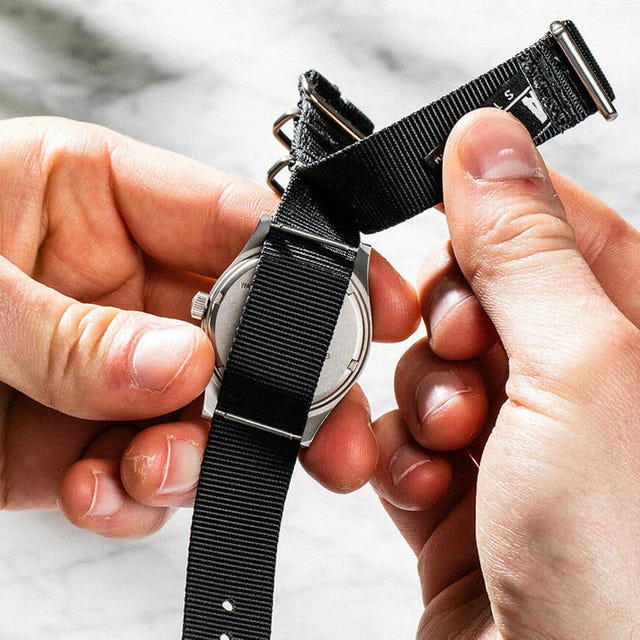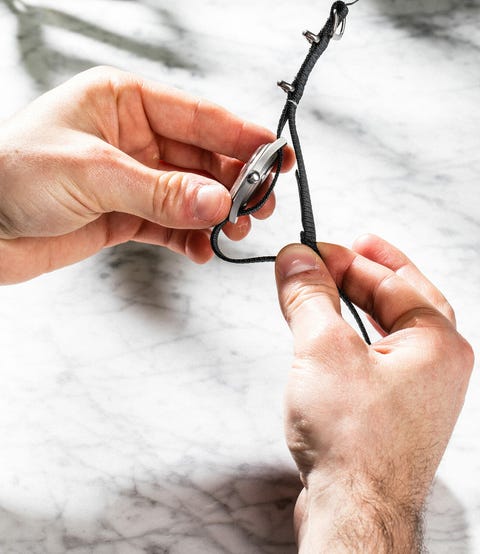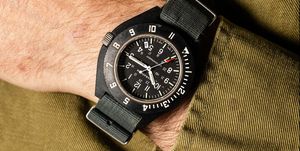Welcome to Further Details, a recurring column where we investigate what purpose an oft-overlooked product element actually serves. This week: the extra keeper and length of material on the underside of NATO watch straps.
NATO straps are a fun, inexpensive and easy way to add some color and uniqueness to a watch. Military in origin, they’re now wildly popular despite having some quirky features that are not at all practical for civilian use. NATOs are such a hit, however, that many people probably never question one key element of their design: why is there an extra length of strap that folds under the watch?
A one-piece strap that simply passes under the spring bars and over the body of the watch would seem to work just fine, but NATOs have yet another layer of material that sits between watch and wrist. It’s typically folded at the buckle and sewn to the strap’s underside with a keeper on its end through which the main strap must be threaded. (If you’re not familiar with how a nato strap works, it’s perhaps best explained visually.)
If you ask a watch enthusiast what it’s for, they’ll enthusiastically tell you that if a spring bar fails during strenuous military use, the watch won’t simply fall off your wrist — as would occur with something like the standard two-piece strap. However, this doesn’t explain the NATO strap’s design at all: a single-pass strap (i.e, one without the extra length in question) would do the same job just as well.
Not only does this part of the NATO strap design seem unnecessary, but it creates further bulk by causing the strap to sit higher on the wrist — so much so that if you want to make a small watch wear more prominently, a NATO strap serves as a good solution. Designed to possibly be worn over a sleeve (which would be eccentric for modern casual wearers), yet more bulk is created by the necessity of tucking the strap’s end back in. There better be a good reason for all the extra fuss associated with NATO straps!
The purpose of the NATO strap’s length is well understood (see above), but it seems that not many people have a definitive explanation for the extra keeper. It’s been suggested that quartermasters used to hang watches on pegs by the buckle end and that this keeper would prevent the watch heads from sliding off. That doesn’t seem like a compelling enough reason for the design, but it does hint at the idea that this can keep the watch head from sliding off the strap.
Most likely is that the military felt it was necessary to keep the watch head from sliding around on the strap while being worn. Single-pass straps existed before the NATO was created for the British military in 1973 — indeed, a sort of fabric “proto-NATO” was used as early as WWII on A-11 and other military watches — but it’s easy to imagine that watch heads sliding around on straps was a problem they wanted to solve. This would further be an issue for watches with wider lug widths than that specified in the government spec for NATO (G-10) straps. While probably not a big concern for most properly sized straps today, it might have made a difference in military situations.
In the end, it’s the NATO’s overkill and over-design that many watch wearers enjoy anyway. Even if various aspects of the strap don’t feel practical for the modern watch wearer, we can be sure that the military had a purpose in requiring this design. NATO straps just feel purposeful anyway, and that’s one more reason to love them.





















